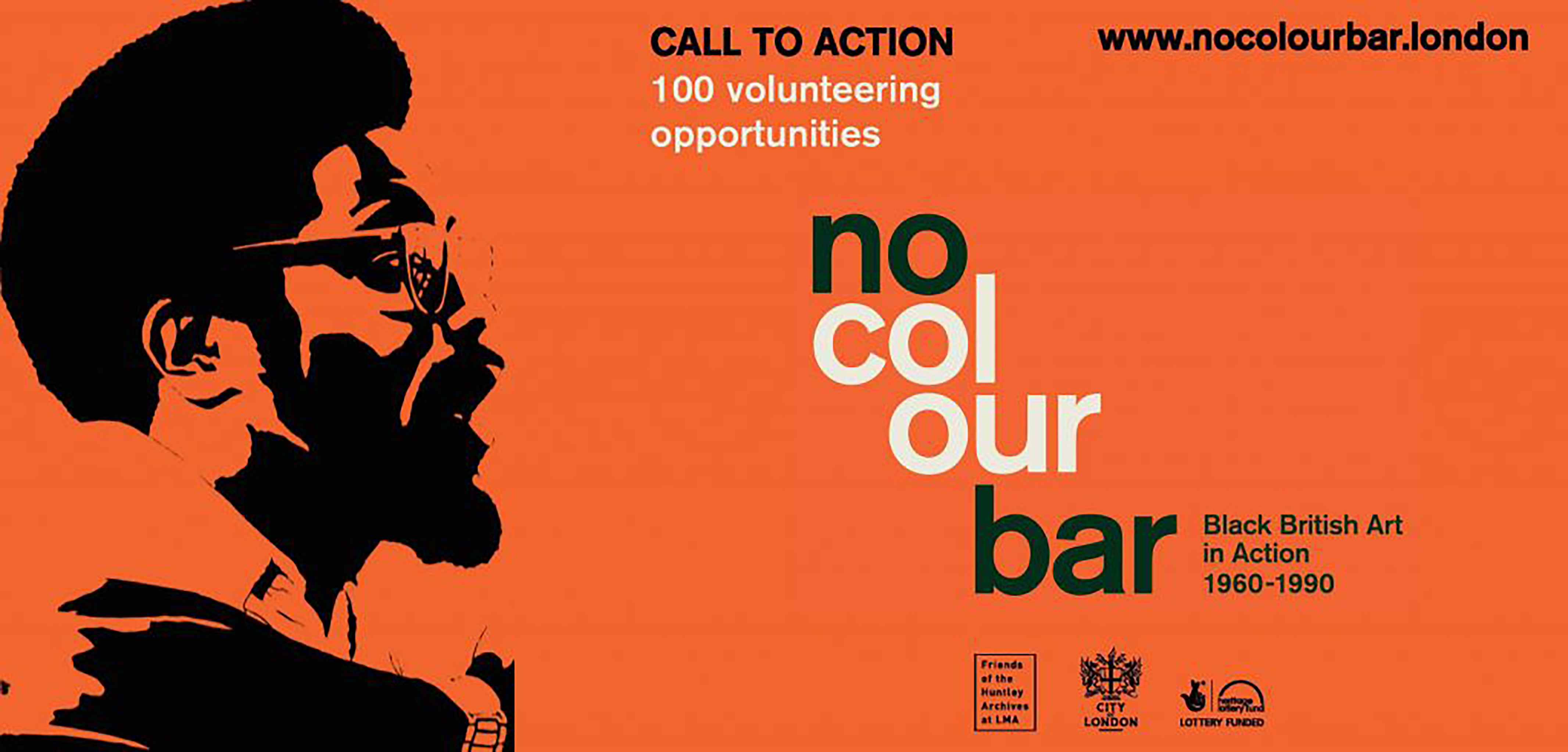Annemari de Silva, MA South Asian Area Studies
‘No Colour Bar’ is an exhibition coordinated by Friends of the Huntley Archives at the LMA at the Guildhall Art Gallery that has been running since July this year. It explores the artistic and activist Black British culture that burgeoned from the 1960s onwards, centring around the work done through Bogle-L’Ouverture Publications Limited and The Walter Rodney Bookshop, both established by prominent activists Jessica and Eric Huntley. The exhibition attempts to recreate the feel of the bookshop, a dynamic hub for generations of politically active radical Black intellectuals, but is also filled with artwork from the original artists, private letters exchanged, and a range of artefacts. When experienced in toto, the exhibition provides a surprisingly extensive and detailed entry into the journey of Black British culture from the 1960s.
Two sculptures designed by Fowokan George Kelly stand beside each door of the exhibition entrance. One, a deity, is a guardian of souls lost during transportation in slave ships; the name of the other, a queen, recalls a town of escaped, then recaptured slaves. The political significance of the busts sets the tone for the exhibition before you enter; upon entry, you’re confronted with a bust of Jessica Huntley. Whether the choice of the artist or the curator, these touches are ingeniously facilitate the experience of the viewer, directing them to comprehend the significance of the Huntley’s work for culture and memory.
The exhibition reflects the diversity of thematic focus, material, medium, and political messages of the creative minds on display. Black womanhood is explored through charcoal paintings, body prints, and material manipulation. Then there are posters of past events featuring such icons as John Agard, Aubrey Williams, Valerie Bloom. For the voyeur, personal letters between Eric and Jessica are on display. These letters, actually, are my only point of criticism, as the transcribed print had some careless errors, such as mistaking $1.50 for $1.40, and the question ‘What of aunty’s knee?’ transcribed as ‘What of aunty’s know?’ Bizarrely careless considering the otherwise meticulous organisation of the exhibit.
A large part of the exhibition were politically charged pieces. One painting by Tam Joseph was a personal favourite, ‘Monkey dey chop, Baboon dey cry’, a detailed critique of corruption, inequality, gendered labour, race and religion, political power… so much. These pieces are placed alongside issues of ‘Race Today’, providing a reference point to compare Black British relations then and now.
Artefacts from Bogle-L’Ouverture sample some of incredible work the publishing nouse has facilitated into the public domain. Perhaps the most prominent of these are the trial covers and early editions of Walter Rodney’s ‘How Europe underdeveloped Africa’. A separate section of the exhibition recreates the look of the bookshop and contains audio, video and photographic archives of the activities run by the bookshop and activist groups. Pictures of demonstrations about the murder of Michael Smith, videos of visitors to the International Book Fair of Radical Black and Third World books, and audio clips of poets performing at events at the bookshop are all available through the multimedia stations inside the bookshop display. It makes for an immersive experience and is a credit to the exhaustive collecting efforts done by the Huntley Archives.
This exhibition is an important one for anyone interested in activist culture, Black British creative expression and its modern heritage, and those simply interested in viewing a snapshot of life that wasn’t all pop art, bob cuts and sequinned onesies in the 60s to 90s. Moreover, this exhibition is one of the first of its kind, situated in a prestigious gallery. It is something wanted and needed by the public and it ought to command a large visitor constituency to insist that, yes, this is what we want to see in public galleries, what we need to see to remember our collective history.
